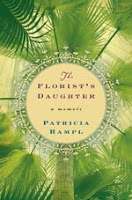When Johnny (& Janey) Don't Read -- then what?
Crain says:
More alarming are indications that Americans are losing not just the will to read but even the ability. According to the Department of Education, between 1992 and 2003 the average adult’s skill in reading prose slipped one point on a five-hundred-point scale, and the proportion who were proficient—capable of such tasks as “comparing viewpoints in two editorials”—declined from fifteen per cent to thirteen.And "comparing viewpoints in ...editorials" is exactly what I want students to do in my class. This term they will be compiling editorials and op-ed pieces into a portfolio and responding. The challenge is for them to move beyond the response of "he's right/wrong" to more critical and analytical thinking. We teach about Aristotelian appeals, and while students always claim to be most attuned to logical logos, in fact they are as susceptible as anyone to pathos and ethos, the essence of television ads, whether commercial or political, even TV shows.
There is something to gain [from watching TV], of course, or no one would ever put down a book and pick up a remote. Streaming media give actual pictures and sounds instead of mere descriptions of them. “Television completes the cycle of the human sensorium,” Marshall McLuhan proclaimed in 1967. Moving and talking images are much richer in information about a performer’s appearance, manner, and tone of voice, and they give us the impression that we know more about her health and mood, too. The viewer may not catch all the details of a candidate’s health-care plan, (emphasis mine) but he has a much more definite sense of her as a personality, and his response to her is therefore likely to be more full of emotion. There is nothing like this connection in print.And because our students read less in print and watch more on the screen, the effect can be a greater challenge for analysis. As Crain points out:
Emotional responsiveness to streaming media harks back to the world of primary orality, and, as in Plato’s day, the solidarity amounts almost to a mutual possession. “Electronic technology fosters and encourages unification and involvement,” in McLuhan’s words. The viewer feels at home with his show, or else he changes the channel. The closeness makes it hard to negotiate differences of opinion. It can be amusing to read a magazine whose principles you despise, but it is almost unbearable to watch such a television show. And so, in a culture of secondary orality, we may be less likely to spend time with ideas we disagree with.This certainly was true even with the assignment to read chapter 28 of our textbook Everything's an Argument, which contains essays on the topic of America's reputation abroad - "Why do they love us? Why do they hate us?" A surprising number of students were not only shocked to discover that America is not universally loved, but also angry. They had no doubts about their belief. This ties in to Crain's comment that,
[s]elf-doubt, therefore, becomes less likely. In fact, doubt of any kind is rarer. It is easy to notice inconsistencies in two written accounts placed side by side. With text, it is even easy to keep track of differing levels of authority behind different pieces of information. The trust that a reader grants to the New York Times, for example, may vary sentence by sentence. A comparison of two video reports, on the other hand, is cumbersome. Forced to choose between conflicting stories on television, the viewer falls back on hunches, or on what he believed before he started watching.And that lack of critical thinking is a real problem. Teaching students to evaluate and be skeptical of what they see and read is, of course, a main goal of a college education. Crain has laid out the history of this dilemma well.

 I'm hoping for some reading time this holiday season. Of course I'm always reading - but mostly student papers - which still stand in stacks on my office floor waiting for me to finish grading. But when I'm done - well, Markus Zusak's
I'm hoping for some reading time this holiday season. Of course I'm always reading - but mostly student papers - which still stand in stacks on my office floor waiting for me to finish grading. But when I'm done - well, Markus Zusak's 